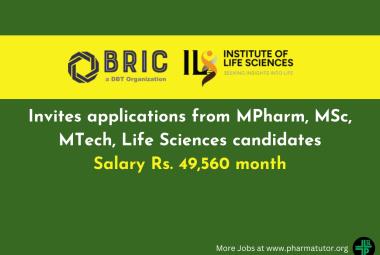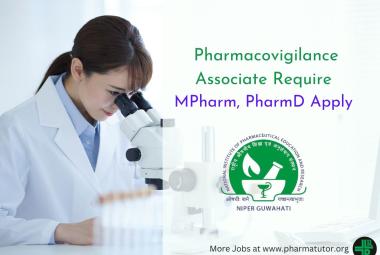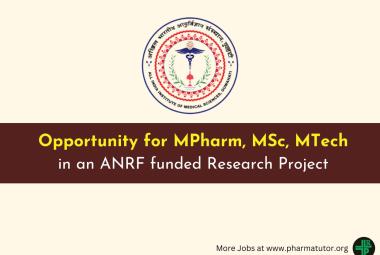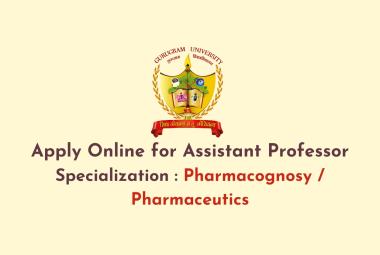




June 2018 ARTICLE LIST >>
PharmaTutor (June - 2018)
ISSN: 2347 - 7881
(Volume 6, Issue 6)
Received On: 12/03/2018; Accepted On: 17/04/2018; Published On: 01/06/2018
AUTHORS:
Vipul Gandhi, Sushil Burle, Satish Kosalge
Department of Pharmacy,
Hi-Tech College of Pharmacy,
Morwa, Chandrapur, Maharashtra, India
* vipul96gandhi@gmail.com
ABSTRACT
Some of the problems with unproductive relaxing treatments and insufficient repair aptitude in the central nervous system are most troubling problems for few neurological diseases. Providentially, the development of clinically relevant populations of stem cells has provided an opportunity to overcome the failure of endogenous repair systems and substitute new cells into the injured brain. However, there are still several existing difficulties in interpreting into clinical application. In this review, we mainly focus on the stem cell based therapies for Parkinson’s disease and discuss the possible advantages and drawbacks. We hope this review may provide suggestions for viable policies to overcome the current technical and biological issues relatedto the application of stem cells in Parkinson’s disease (Fu et al., 2015).
How to cite this article: Gandhi V, Burle S, Kosalge S; Stem Cell Therapy for Parkinson’s disease: A Review; PharmaTutor; 2018; 6(6); 1-8; http://dx.doi.org/10.29161/PT.v6.i6.2018.1
[ABSTRACT WITH CITATION] [VIEW AS HTML]

REFERENCES:
1. Bergman, H., & Deuschl, G. (2002); “Pathophysiology of parkinsion’s disease: From clinical neurology to basic neuroscience and back”; Movement Disorders; 17(SUPPL. 3); 28-40.
2. Canet R., Geoffrey P. Lomax, Ellen G. Feigal, Catherine Priest (2014); “Proceedings: Cell Therapies for Parkinson’s disease From Discovery to Clinic”; California Institute for Regenerative Medicine, San Francisco, California, USA 2014.
3. Chen L, Feany M.B.(2005); “Alpha-synuclein phosphorylation controls neurotoxicity and inclusion formation in a Drosophila model of Parkinson disease”; Nat Neurosci; 8(5); 657-663.
4. Choi, S. S., Ryu, G. H., Kim, D. H., Lee, D. S., Lee, S., Kim, S. Y., J Lee, H. (2017); “Stem Cell Applications in Parkinson’s Disease”; Journal of Alzheimer’s Disease & Parkinsonism; 7(1); 1-3.
5. Cooper, O., Seo, H., Andrabi, S. et al. (2012); “Pharmacological rescue of mitochondrial deficits in iPSC-derived neural cells from patients with familial Parkinson’s disease”; SciTranslMed; 4(141); 141ra90
6. Correia, A. S., Anisimov, S. V., Li, J. Y., & Brundin, P. (2005); “Stem cell-based therapy for Parkinson’s disease”, Annals of Medicine; 37(7); 487-498.
7. de la Fuente-Fernandez , R., Schulzer M, Mak E et al.( 1998); “The role of the Lewy body in idiopathic Parkinsonism”; Parkinsonism Related Disorder; 4(2); 73-77.
8. Dexter, D.T., Wells, F.R., Lees, A.J., et al. (1989); “Increased nigral iron content and alterations in other metal ions occurring in brain in Parkinson’s disease”; Journal of Neurochemistry; 52(6); 1830-1836.
9. Fehmida Farid Khan (2013); “Parkinson disease and use of stem cells for therapeutic approaches of Parkinson disease”; IOSR Journal of Pharmacy and Biological Sciences (IOSR-JPBS); 7(5); 73–82.
10. Fu MH., Li CL., Lin HL, Chen, PC., Calkins M J., Chang YF., Yang SH (2015); “Stem cell transplantation therapy in Parkinson’s disease”; Springer Plus; 4(1); 597.
11. Kalra K, Tomar PC (2014), “Stem Cell: Basics, Classification and Application”; American Journal of Phytomedicine and Clinical Therapeutics; 2(7); 919-930
12. Kim, J.-H., Auerbach, J. M., Rodríguez-Gómez, J. A., Velasco, I., Gavin, D., Lumelsky, N., McKay, R. (2002); “Dopamine neurons derived from embryonic stem cells function in an animal model of Parkinson’s disease”, Nature; 418(6893); 50-56.
13. Lindvall, O., & Kokaia, Z. (2006); “Stem cells for the treatment of neurological disorders”; Nature; 441(7097), 1094-1096
14. Nguyen, H.N., Byers, B., Cord, B., et al. (2011); “LRRK2 mutant iPSC-derived DA neurons demonstrate increased susceptibility to oxidative stress”; Cell Stem Cell; 8(3); 267-280.
15. Rana AQ. (2011); “Etiology and pathophysiology of Parkinson’s disease”; Intech open, UK
16. Rusu E., Necula, L. G., Neagu, A. I., Alecu, M., Stan, C., Albulescu, R., & Tanase, C. P. (2016); “Current status of stem cell therapy: Opportunities and limitations”; Turkish Journal of Biology; 40(5); 955-967.
17. Shulman JM, De Jager PL, Feany MB (2011); “Parkinson’s disease: Genetics and pathogenesis”; Annu Rev Pathol,; 6; 193-222.
18. Standaert D.G , Saint-Hilaire M.H, Thomas C. (2006); “Parkinson’s Disease Handbook”, American Parkinson’s Disease Association, NY.
19. Su P., Loane C & Politis M (2011), “The Use of Stem Cells in the Treatment of Parkinsons Disease”; Insciences Journal; 1(3); 136-156
20. Weil RS, Schrag AE, Warren JD, Crutch SJ, Lees AJ, Morris HR (2016); “Visual dysfunction in Parkinson’s disease”; Brain- A Journal of Neurology; 139(11); 2827-2843.













